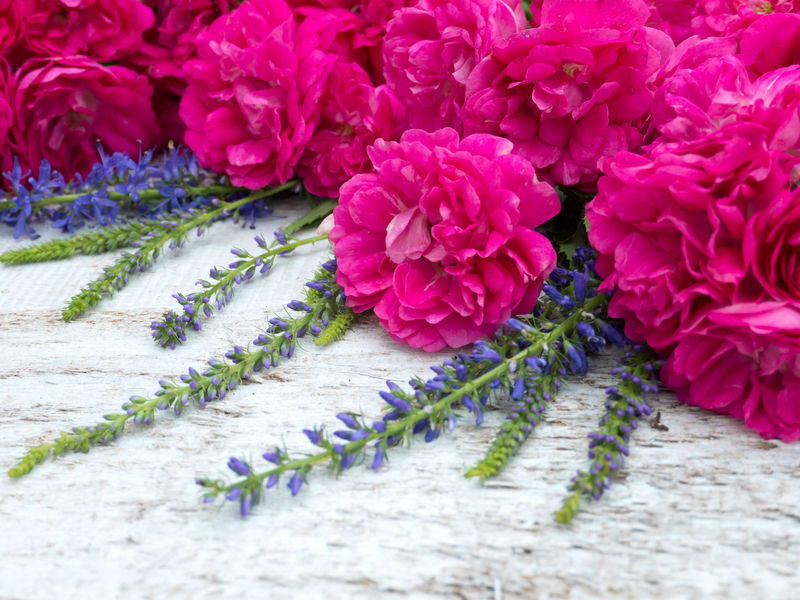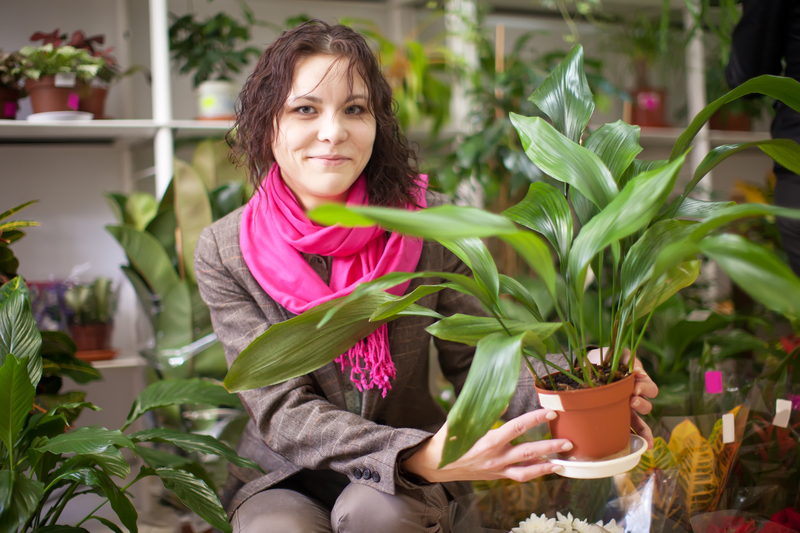Growing Joy: Cultivate a Lush Herb Environment
Posted on 27/09/2025
Growing Joy: Cultivate a Lush Herb Environment
Few things in life spark as much joy for home gardeners as nurturing a lush, aromatic herb garden. Whether perched on a sunny kitchen windowsill or sprawling in the backyard, cultivating a vibrant herb environment infuses your daily routine with fragrance, flavor, and fresh inspiration. This comprehensive guide will walk you through every step of creating your own verdant herb sanctuary, packed with actionable tips, expert insights, and creative ideas to help you grow an abundant, thriving herb ecosystem--a true celebration of green joy.

Why Grow Your Own Herbs? The Multifaceted Benefits
Growing and tending to herbs isn't just about adding a burst of flavor to your meals--it's a lifestyle upgrade. Here are several compelling reasons why you should consider establishing a lush, robust herb environment at home:
- Fresh Flavor: Nothing rivals the vibrant taste of freshly snipped basil, mint, or rosemary in your cooking.
- Cost-Efficiency: Homegrown herbs can save you significant money over buying pre-packaged varieties from the store.
- Health Boost: Many herbs contain potent antioxidants, essential nutrients, and natural healing properties.
- Environmental Impact: Growing your own herbs reduces reliance on industrial agriculture and cuts down on plastic waste.
- Therapeutic Benefits: Gardening has been shown to reduce stress, boost mood, and enhance mindfulness.
- Sensory Experience: A flourishing herb environment awakens your senses with lush greenery and fragrant aromas.
Planning Your Lush Herb Environment
Assess Your Space and Light
Before diving into herb selection, evaluate your growing space. Consider the following:
- Outdoor vs. Indoor: Do you have a backyard, balcony, or just a sunny windowsill?
- Sunlight: Most culinary herbs love full sun, needing at least 6 hours of direct light daily. South- or west-facing windows are ideal indoors.
- Climate: Your climate zone determines which herbs thrive best outdoors all year round. Check your USDA Hardiness Zone or equivalent in your region.
- Space Considerations: Plan for the future growth of each plant. Remember, some herbs--like mint--spread rapidly and may need containment.
Choose the Best Herbs for Your Needs
When planning your herb paradise, think about your intended uses. Do you favor herbs for cooking, wellness, or ornamental value? Here are popular options for cultivating a plentiful herb oasis:
- Basil: Sweet, spicy, and essential for Italian and Southeast Asian cuisine.
- Rosemary: Woody aroma, perfect for roasts, breads, and even cocktails.
- Oregano: A Mediterranean classic, robust and hardy in most climates.
- Mint: Invigorating scent, versatile for teas, desserts, and savory dishes.
- Thyme: Delicate leaves, excellent for soups and marinades.
- Cilantro (Coriander): Adds zest to salsas, salads, and curries.
- Parsley: Bright and fresh--fantastic as a garnish or main ingredient in tabbouleh.
- Dill: Feathery fronds, ideal for pickles and seafood dishes.
- Chives: Mild, oniony flavor and beautiful edible flowers.
Don't be afraid to experiment! Many delight in less common herbs like lavender, lemon balm, or sage.
Creating the Ideal Growing Conditions
Soil and Planting Medium
Quality soil is the foundation of a lush herb environment. Use these tips to ensure optimal results:
- Well-Draining Soil: Herbs dislike soggy roots; choose a light, well-aerated potting mix, especially for container gardens.
- Organic Matter: Amend your soil with compost or aged manure to provide nutrients and improve texture.
- pH Balance: Most herbs prefer slightly acidic to neutral soil (pH 6.0-7.0).
- Container Choice: Use pots with adequate drainage holes to prevent waterlogging. Terracotta pots are classic and breathable.
Watering Wisely
Consistent, thoughtful watering is central to cultivating lushness--but avoid overwatering, a common herb-killer!
- Check Soil Moisture: Stick your finger an inch below the surface. If it's dry, it's time to water.
- Morning Routine: Water early in the day to allow leaves to dry, preventing fungal issues.
- Grouping by Needs: Some herbs (like basil) require more moisture, while Mediterranean herbs (rosemary, thyme, oregano) prefer drier conditions.
Fertilizing for Vibrancy
While most herbs are relatively low-maintenance, a little feeding goes a long way:
- Compost Tea: Provide a gentle boost of nutrients without overloading your plants.
- Balanced Organic Fertilizer: Use sparingly every 4-6 weeks during peak growth season.
- Avoid Overfeeding: Excess nutrients can diminish essential oils, making herbs less flavorful.
Pruning and Harvesting Techniques
Regular pruning encourages bushy, healthy growth. It also extends the productive life of your herb plants:
- Pinch Early and Often: Pinch off the tips of stems to stimulate branching and prevent premature flowering (bolting).
- Harvest Strategically: Always snip with clean scissors just above a set of leaves.
- Remove Flowers: For most herbs (except for edible blossoms like chive flowers), removing buds keeps flavor concentrated in foliage.
Designing Your Herb Sanctuary: Creative Environment Ideas
Indoor Herb Gardens
- Windowsill Wonders: Arrange a collection of small pots on your sunniest kitchen ledge for easy snipping while you cook.
- Vertical Planters: Maximize space in small apartments with wall-mounted or hanging containers.
- Hydroponic Herb Kits: Modern countertop systems provide light and water-regulated environments for year-round herb growth.
Outdoor Herb Paradise
- Raised Beds: Create tidy rows or artistic patterns for beauty and accessibility.
- Herb Spirals: Construct a spiral-shaped mound from stones or bricks to provide varied microclimates for herbs with different needs.
- Border Edging: Enchant your garden paths with fragrant lavender, thyme, or sage as living borders.
- Companion Planting: Interplant herbs with vegetables and flowers to deter pests and enhance pollination.
Container & Balcony Herb Gardens
- Mix and Match: Group herbs with similar sunlight and watering needs in large troughs or colorful containers.
- Tiered Plant Stands: Maximize vertical space and create a lush, layered effect.
- Hanging Baskets: Suspend trailing herbs like oregano or mint for a stunning visual display.
Common Challenges and How to Overcome Them
Pest Management the Natural Way
A healthy, well-maintained herb environment is your first defense. However, if pests do appear:
- Hand-pick: Remove larger bugs (like caterpillars) manually.
- Soap Sprays: Treat aphids and mites with a mild soapy water spray.
- Beneficial Insects: Invite ladybugs, lacewings, and other predators into your garden.
- Rotate Crops and Clean Up: Prevent disease by rotating plantings and removing dead leaves regularly.
Avoiding Overcrowding and Bolting
Crowded herbs struggle for nutrients and are more likely to bolt (flower and set seed prematurely).
- Give Space: Follow seed packet or nursery recommendations for spacing.
- Regular Harvesting: Prevents herbs from going to seed too soon.
- Pinch Off Flower Stems: Direct energy back to leaf production.
Lighting and Temperature Tips
- Supplement with Grow Lights: If natural light is scarce indoors, use LED grow lights set to a 12-14 hour schedule.
- Protect from Frost: Bring potted herbs indoors on chilly nights or use frost cloths for garden beds.
- Ventilation: Ensure good air circulation to prevent mildew and fungal diseases.
Harvesting and Preserving Your Lush Herb Bounty
Regular harvesting is not just a reward--it keeps your herb environment lush and productive. For best flavor, harvest in the morning after dew has dried and before the sun leaches essential oils.
- Use-Fresh: Incorporate snipped herbs into salads, soups, or drinks for immediate flavor.
- Drying: Tie herbs in small bundles and hang upside down in a warm, airy spot until crisp.
- Freezing: Chop herbs and freeze in ice cube trays with a bit of water or oil for winter cooking ease.
- Herbed Oils & Vinegars: Infuse homemade oils or vinegars with herbs for gourmet gifts and long-term preservation.
Herbs for Happiness: Savoring the Joy of a Lush Herb Environment
Cultivating a lush herb paradise provides endless pleasures--the visual delight of thick foliage, the invigorating scent wafting through your day, and the irresistible taste added to meals. It's also a mindful daily practice that encourages patience, observation, and gratitude for nature's gifts.
*Imagine snipping basil for homemade pesto, infusing honey with rosemary, or simply brushing your fingers through a pot of mint after a long day--these small rituals nurture not just your environment, but your spirit, too.*
Ready to cultivate your green sanctuary? With the tips above, you can create a lush herb environment that overflows with joy, beauty, and bounty season after season. Whether on a sunlit sill or in a thriving outdoor bed, your herbal paradise awaits--and so does a growing sense of joy.

Frequently Asked Questions About Growing a Lush Herb Environment
- Q: Can I grow a lush herb environment indoors year-round?
A: Yes! Use the sunniest spot available, supplement with grow lights, and choose herbs like basil, chives, and parsley that adapt well to indoor conditions. - Q: What's the easiest way to start if I'm a beginner?
A: Begin with a few potted herbs on your kitchen window. Mint, basil, and parsley are beginner-friendly and quick to produce. - Q: How can I keep my herb garden productive all season?
A: Harvest regularly, avoid letting herbs flower, group plants with similar needs, and feed with compost tea every month. - Q: Which herbs can be planted together for a fuller, more lush look?
A: Group Mediterranean herbs (rosemary, thyme, oregano, sage) together and keep moisture-loving herbs (basil, cilantro, parsley) in a separate, more hydrated area.
Conclusion: Growing Joy Through a Thriving Herb Environment
Cultivating a lush herb ecosystem is more than a gardening project--it's a source of daily happiness, flavor, and creativity. By following these tips for light, soil, watering, and creative design, you'll transform any space into a living, breathing celebration of nature's bounty. So dig in, experiment, and let your herb garden grow--and let the joy of growing fill your kitchen, your garden, and your life.
Start small, dream big, and watch your lush herb environment flourish--bringing growing joy, one leaf at a time.



